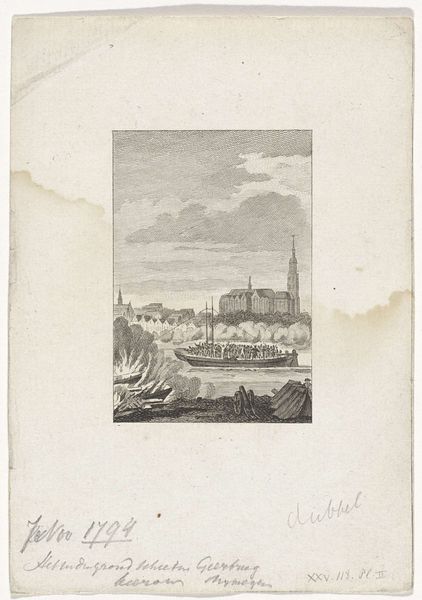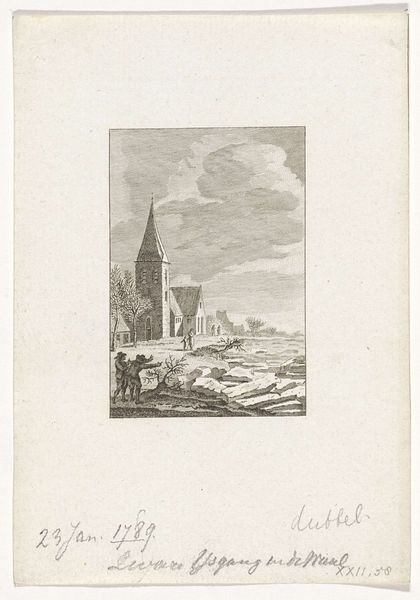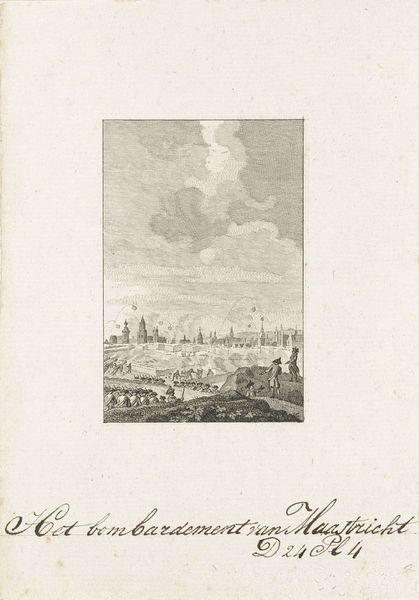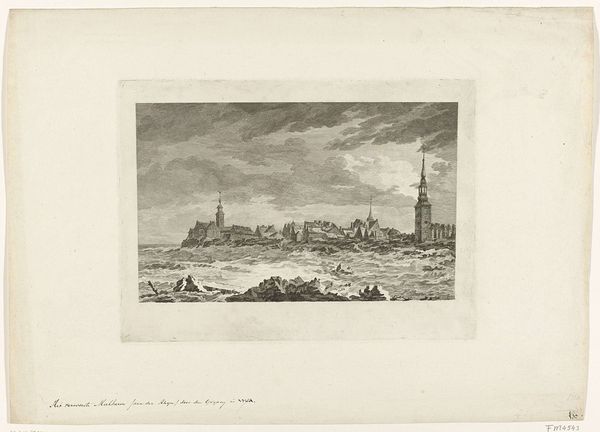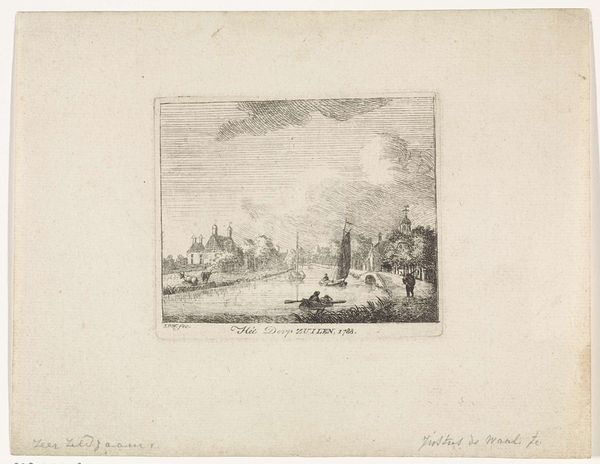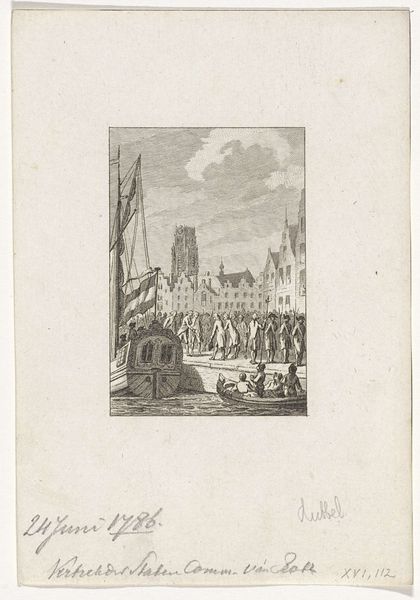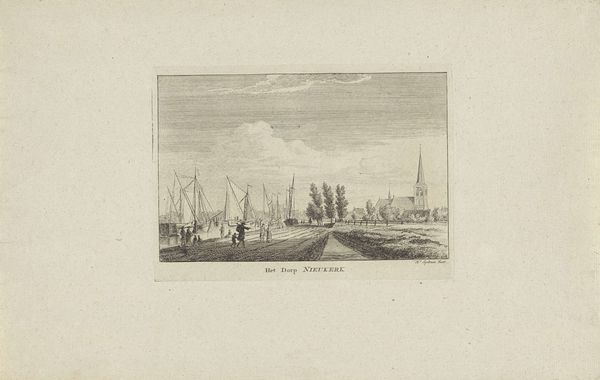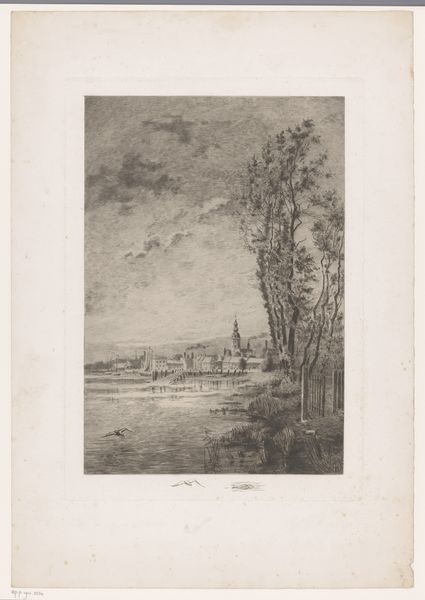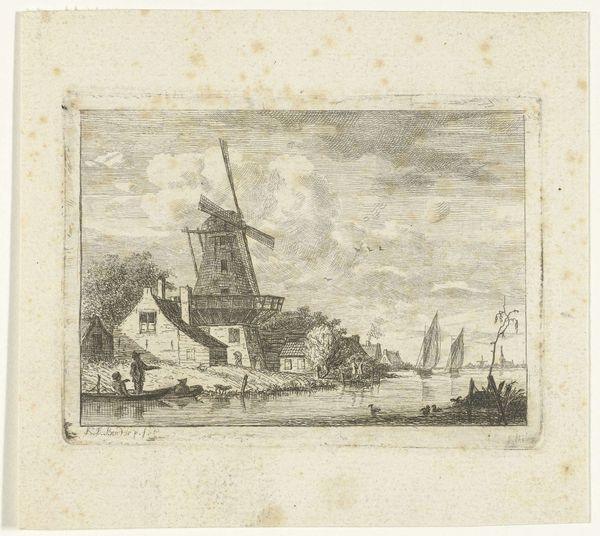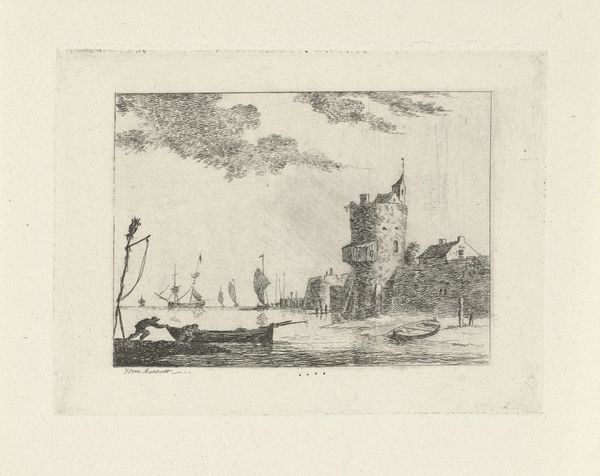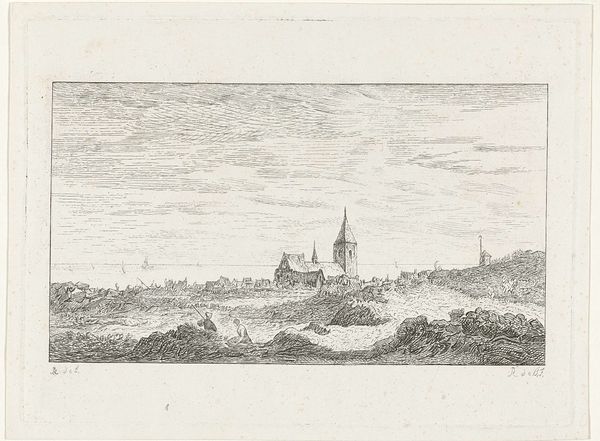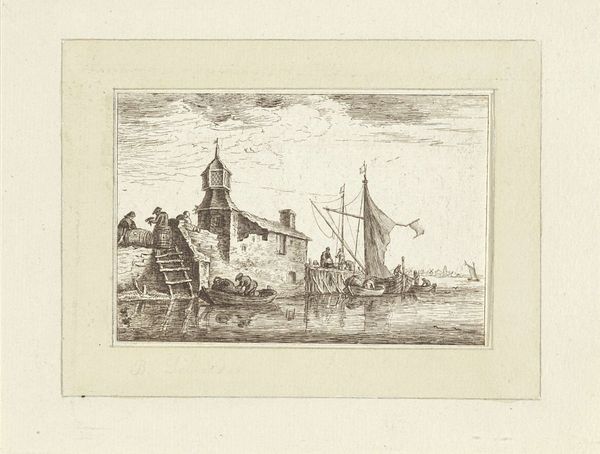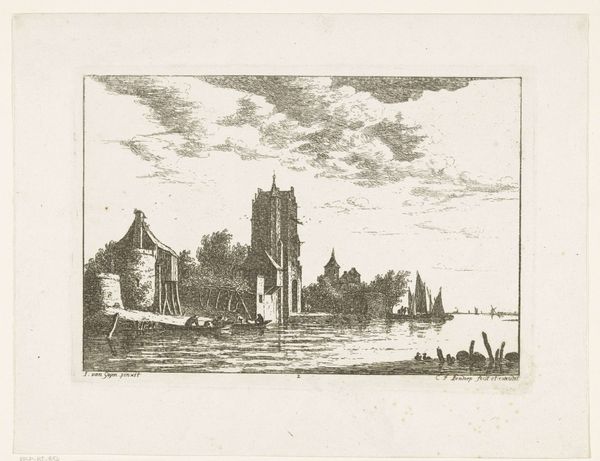
print, engraving
#
dutch-golden-age
# print
#
light coloured
#
old engraving style
#
landscape
#
personal sketchbook
#
cityscape
#
engraving
Dimensions: height 160 mm, width 100 mm
Copyright: Rijks Museum: Open Domain
Editor: So, this is "High sea for Scheveningen" from 1790, by Reinier Vinkeles, it’s an engraving. It gives me a feeling of tension, seeing the sea so close to the village. What do you see in this piece, from your perspective? Curator: I see a powerful representation of the Dutch relationship with the sea, which has profoundly shaped their society and culture. Vinkeles captures not just a landscape, but a negotiation. The elevated perspective implies a certain degree of safety and distance, but we’re still drawn into the scene's immediacy and that feeling of tension. Editor: Negotiation is a great word! How did engravings like this one function back then? Was it like a postcard? Curator: In some ways, yes. Prints were vital in disseminating imagery to a wider public, especially before photography. This engraving offers a romanticized yet dramatic glimpse into everyday life in a coastal community. Its availability likely shaped how people perceived Scheveningen, perhaps promoting a certain image of resilience or even attracting tourism. Editor: So, it wasn’t just art for art’s sake? It was actually creating a public image. Curator: Precisely! Consider who commissioned and consumed such images. How did they influence ideas about national identity and the relationship between the Dutch and the sea? The politics of imagery were deeply interwoven with social and economic interests. It invited engagement; even those at a distance could observe a community seemingly wrestling with a powerful natural world. Editor: I see it differently now, it's not just the sea and some houses. There is almost a national story in this one image! Curator: Indeed. By considering the social context, an engraving such as this becomes an interesting case study, more than just a pretty scene of the coast.
Comments
No comments
Be the first to comment and join the conversation on the ultimate creative platform.
